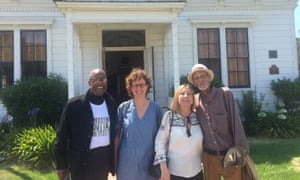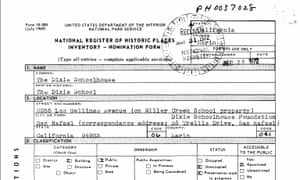Golden Gate Transit considers axing Marin bus routes

The Route 38 Golden Gate Transit bus to Terra Linda crosses the Golden Gate Bridge near Sausalito in 2014. (Alan Dep/Marin Independent Journal)
By WILL HOUSTON | whouston@marinij.com |
PUBLISHED: April 26, 2019 at 4:06 pm | UPDATED: April 26, 2019 at 4:22 pm
Golden Gate Transit bus routes serving Lucas Valley, Marinwood and Sleepy Hollow commuters may be axed for low ridership but nearby routes would see faster, more frequent service, transportation officials said.
The Golden Gate Bridge district board voted unanimously Friday to hold a public hearing in June on whether to cut the Route 44 bus route and the Sleepy Holly section of Route 27.
Supervisor Kate Sears, who serves on the bridge district board, said the district has yet to receive any public input on the proposal, prompting the need for a public hearing. The hearing is set for 9 a.m. June 20 in the bridge district’s board room at the Golden Gate Bridge Toll Plaza Administration Building in San Francisco.
“Some of the proposed modifications should benefit the public as they increase the frequency of transit,” Sears said in a statement. “Other proposals change routes and transit availability somewhat, and that’s what I really want to hear from the public about.”
Route 44, which runs from Marinwood to San Francisco, has failed to meet the district’s 20-passenger-per-trip standard. The route averages about 16 passengers per trip, making it one of the “lowest performing routes in the system,” according to the district.
The district is suggesting Route 44 riders who board along Highway 101 could use Route 58 instead. For those who board Route 44 buses in the Lucas Valley and Marinwood areas, the district is proposing riders take Route 38 buses in Terra Linda.
If Route 44 is eliminated, the district proposes to bolster existing routes by boosting frequency and adding express routes. The four buses on Route 44 would be reassigned to these upgraded routes, according to bridge district spokeswoman Priya Clemens.
View this document on Scribd
The morning and evening Route 27 trips between Sleepy Hollow and the Hub in San Anselmo were previously on the chopping block in December 2016, but were kept in place after community outcry.
“However, no new ridership has materialized in the intervening period, and the one morning and one evening trip in Sleepy Hollow continue to average just three passengers,” the district staff report states.
These aren’t the first routes that faced cuts because of low ridership in recent months. Earlier this year, the district board voted to end the relatively new Route 41 shuttle bus because of poor ridership, averaging two riders per trip. The shuttle, which traveled nonstop from the Smith Ranch Road Park and Ride to the Larkspur Ferry Terminal, ended in March. The run cost the district about $400,000 during its nine-month trial.
Public comments can be submitted by email to publichearing@goldengate.org or by mail to the district secretary at Golden Gate Bridge, Highway and Transportation District, P.O. Box 9000, Presidio Station, San Francisco, 94129-0601.
Route changes
Golden Gate Transit is proposing various changes to its Marin bus routes. Proposed changes include:
Marinwood and Novato:
Discontinue Route 44 and extend Route 38 from Terra Linda to Marinwood along Las Gallinas Avenue and Miller Creek Road
Discontinue Route 38 service along Del Ganado Road in Terra Linda and shift it to service on Freitas Parkway at Montecillo Road.
Add a new afternoon Route 58 trip for Marinwood and Lucas Valley residents.
Increase Route 56’s span and frequency including adding an express route.
Shift Routes 54 and 54C along South Novato Boulevard and central Novato. Route 54 would serve Highway 101 bus pads south of Alameda del Prado.
By WILL HOUSTON | whouston@marinij.com |
PUBLISHED: April 26, 2019 at 4:06 pm | UPDATED: April 26, 2019 at 4:22 pm
Golden Gate Transit bus routes serving Lucas Valley, Marinwood and Sleepy Hollow commuters may be axed for low ridership but nearby routes would see faster, more frequent service, transportation officials said.
The Golden Gate Bridge district board voted unanimously Friday to hold a public hearing in June on whether to cut the Route 44 bus route and the Sleepy Holly section of Route 27.
Supervisor Kate Sears, who serves on the bridge district board, said the district has yet to receive any public input on the proposal, prompting the need for a public hearing. The hearing is set for 9 a.m. June 20 in the bridge district’s board room at the Golden Gate Bridge Toll Plaza Administration Building in San Francisco.
“Some of the proposed modifications should benefit the public as they increase the frequency of transit,” Sears said in a statement. “Other proposals change routes and transit availability somewhat, and that’s what I really want to hear from the public about.”
Route 44, which runs from Marinwood to San Francisco, has failed to meet the district’s 20-passenger-per-trip standard. The route averages about 16 passengers per trip, making it one of the “lowest performing routes in the system,” according to the district.
The district is suggesting Route 44 riders who board along Highway 101 could use Route 58 instead. For those who board Route 44 buses in the Lucas Valley and Marinwood areas, the district is proposing riders take Route 38 buses in Terra Linda.
If Route 44 is eliminated, the district proposes to bolster existing routes by boosting frequency and adding express routes. The four buses on Route 44 would be reassigned to these upgraded routes, according to bridge district spokeswoman Priya Clemens.
View this document on Scribd
The morning and evening Route 27 trips between Sleepy Hollow and the Hub in San Anselmo were previously on the chopping block in December 2016, but were kept in place after community outcry.
“However, no new ridership has materialized in the intervening period, and the one morning and one evening trip in Sleepy Hollow continue to average just three passengers,” the district staff report states.
These aren’t the first routes that faced cuts because of low ridership in recent months. Earlier this year, the district board voted to end the relatively new Route 41 shuttle bus because of poor ridership, averaging two riders per trip. The shuttle, which traveled nonstop from the Smith Ranch Road Park and Ride to the Larkspur Ferry Terminal, ended in March. The run cost the district about $400,000 during its nine-month trial.
Public comments can be submitted by email to publichearing@goldengate.org or by mail to the district secretary at Golden Gate Bridge, Highway and Transportation District, P.O. Box 9000, Presidio Station, San Francisco, 94129-0601.
Route changes
Golden Gate Transit is proposing various changes to its Marin bus routes. Proposed changes include:
Marinwood and Novato:
Discontinue Route 44 and extend Route 38 from Terra Linda to Marinwood along Las Gallinas Avenue and Miller Creek Road
Discontinue Route 38 service along Del Ganado Road in Terra Linda and shift it to service on Freitas Parkway at Montecillo Road.
Add a new afternoon Route 58 trip for Marinwood and Lucas Valley residents.
Increase Route 56’s span and frequency including adding an express route.
Shift Routes 54 and 54C along South Novato Boulevard and central Novato. Route 54 would serve Highway 101 bus pads south of Alameda del Prado.
See the full article in the Marin IJ HERE
 Enlarge
Enlarge Enlarge
Enlarge







